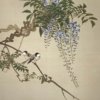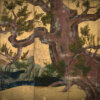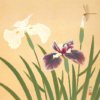Morikawa Sobun: A Talented Artist of the Shijō School Who Lived from the End of the Edo to the Meiji Period
Morikawa Sobun (1847-1902) was a painter who began painting in middle age. However, he loved painting from an early age, so much that he stopped crying when he was given paper instead of sweets when he started crying.
Born as the son of a merchant, Sobun was sent to work as an apprentice until the age of 22. In leisure time, he took lessons from Maekawa Gorei for about a year and then studied under Hasegawa Gyokuhō, who lived in Ōmi Hachiman. Considering the traffic conditions at the beginning of the Meiji era, it was very difficult to travel from Kyōto to Ōmi Hachiman to see the master. Sobun also met Kōno Bairei in youth there and was told that “It’s too late for painting, so don’t do it, just draw a rough sketch of Yūzen,” while he was stimulated and worked hard for further training. Sobun, who really wanted to draw a picture, seemed to have learned almost by himself. When the Kyōto Prefectural School of Painting was built in 1889, Sobun had acquired the ability to be selected as a member of the board. In 1882, he won the bronze medal at the First Naikoku Kaiga Kyōshinkai exhibition and established his position in the Kyōto art world.
Sobun had confidence to said, “Mori Kansai’s paintings are dirty, and Imao Keinen’s paintings are too beautiful, like Yūzen. My paintings are right in the middle”. It is true that Imao Keinen’s paintings are beautiful and gorgeous. However, his brushstrokes of drawing lines are weak and he lacked the brushwork which is necessary for paintings. In the works of Mori Kansai, there is a hazy expression of color, and as for Kansai, the sense of color in Japanese painting, which is produced by the condition of paint and glue, cannot be said to be rich. In this point, as Sobun states himself, his brushwork was closer to that of Kansaï’s than that of Keinen, and his color expression is free from Kansaï’s muddiness.
Mandarin Ducks and Plum Blossom / Twin Deer under Maple Tree / Flowers and Birds of the Four Seasons
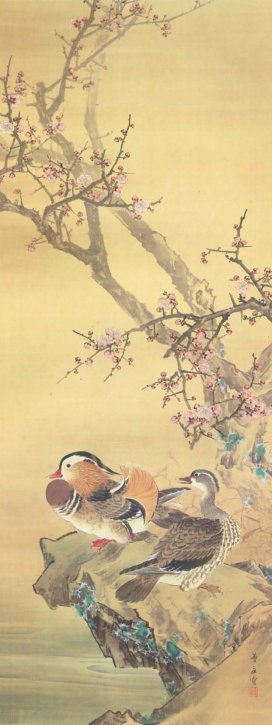
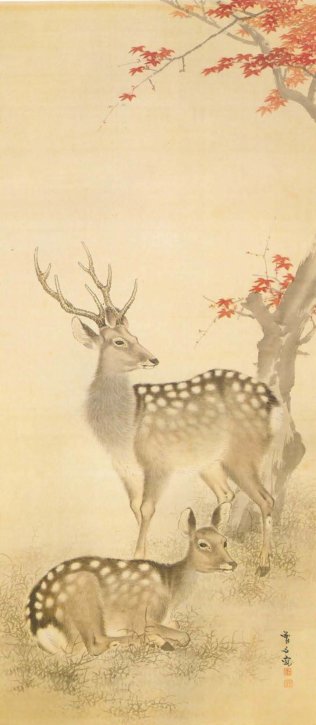

Sobun’s painting skills in the three works above are quite outstanding, which shows that he was devoted to his training. In “Mandarin Ducks and Plum Blossoms”, which is expressed by elaborate technique, the expressing method of the mandarin ducks and the simplified depiction of the trunk of the red plum tree are harmonized to accurately capture the sense of perspective. The same technique is utilized and can be seen in “Twin Deer under Maple Tree”, where the relationship between the two deer and the maple tree trunk placed under the maple in autumn leaves. While the standing stag and the doe are depicted with careful brushwork, the maple tree trunk is depicted simply with vigorous brushwork. The technique used for the trunks in both paintings is called the *tsuketate technique, which was a specialty of the Shijō School painters. The technique is excellently used in the four strips of “Flowers and Birds of the Four Seasons”. The technique seen in these four strips is typical of the techniques used by the painters of the Shijō School. Although the technique omits details as much as possible, pursued the accurate expression of the emotions of the subject, which shows the characteristics of the Shijō School. This strip reminds us of the painting method of Takeuchi Seihō, who was a fellow pupil of Sobun and Kōno Bairei. Seihō further refined and perfected this technique, and it is clear that Sobun’s painting technique places before Seihō’s.
- Tsuketate: One of the typical techniques of Japanese painting that does not draw the outlines but do with one brushwork containing light and shade, two types of Sumi inks or paints simultaneously at once so that the result can express the shade and the stereoscopic effect, which can be often seen in Maruyama and Shijō schools.

